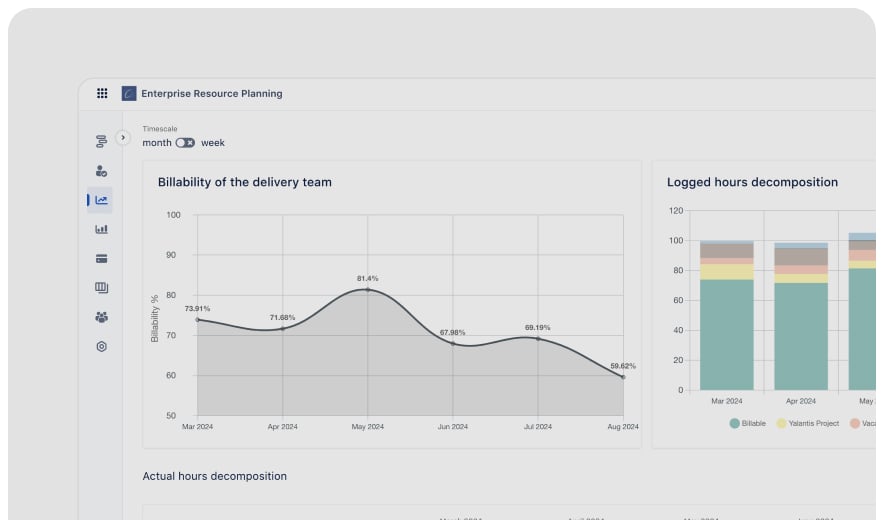When managers notice their team is exhausted, it’s not the first warning bell. It’s a full-blown alarm. Burnout doesn’t happen overnight. It builds up slowly, week by week, when people keep working without breaks, when they’re constantly “on flow” but start losing purpose, when they receive no feedback and feel disconnected from the bigger picture.
Burnout at work isn’t just about fatigue. It’s a sign of systemic breakdowns in people management that leave teams drained and businesses vulnerable. That’s when HR and leadership need to stop being firefighters and start acting as architects of healthy processes.
To address this challenge, Yalantis developed and implemented the Human Resource Management System (HRM) by SHERP, a fully integrated solution connected with SHERP’s ERP and CEP platforms.
What causes burnout in modern teams?
Based on real-world experience in the IT industry, we’ve identified the most common triggers:
- Uneven workload distribution. Without structured planning, the imbalance often surfaces only after deadlines are missed.
- Lack of transparency around time-off and replacements. Managers hesitate to approve vacations, unsure of who will step in.
- No feedback loop. Employees complete dozens of tasks weekly, but have no idea how it impacts their growth.
- Communication fatigue. When people can’t see where they fit in the organization, motivation drops fast.
How SHERP helps prevent burnout: real features solving problems
We built the SHERP ecosystem to do more than automate processes; it’s designed to foster a culture of care.
Pain Point: Time-off = Chaos
In many mid-sized companies, one person taking time off can trigger a domino effect: Who’ll replace them? Will the project suffer? Was anyone even informed about their leave?
In these situations, HR ends up relying on memory or messy spreadsheets, and managers make decisions based on guesswork.
That’s why we developed SHERP HRM with a powerful time-off management module to bring structure and calm into what’s often a chaotic process.
Time-off management includes:
- Fully automated vacation requests
- Smart approval chains
- Real-time workload analysis before approval
- Automatic substitute assignment
Teams stay balanced. Employees rest without guilt. Business keeps running smoothly.
Pain Point: Unbalanced Workload
Some employees silently carry the most critical tasks from project to project. Everything seems fine until it isn’t.
The SHERP ecosystem provides real-time visibility into team workload, tracks time-off history, and shows all assigned tasks.
This isn’t about micromanagement; it’s about clarity and fair distribution. That’s how teams stay healthy.
Pain Point: Burned out, but silent
Let’s face it, employees won’t always speak up when they’re struggling. Which is why we built ESAT surveys right into SHERP HRM. These regular pulse checks capture team sentiment before problems escalate.
But more importantly, these insights feed into our risk analytics module, helping HR and managers identify who needs support, whether through workload adjustments, rotation, or simply a conversation.
Pain Point: No growth = No energy
Burnout thrives in stagnation. When people keep working but don’t feel progress, energy and motivation fade.
That’s why SHERP HRM combines potential assessment (9-box model) with personal development planning (IDP). The system helps uncover strengths, identify growth opportunities, and build a tailored roadmap, not a generic checklist.
“Care” isn’t just a soft skill. It’s a system.
You can’t solve burnout with a motivational quote or a yoga session. It takes structure, transparency, analytics, and respect for people’s time and effort.
SHERP isn’t just about managing people. It’s about managing your most valuable resource, human potential.
Ready to build a system where teams grow, not burn out?
Let’s talk, and we’ll show you how SHERP makes it possible.

